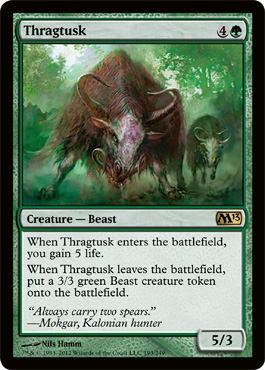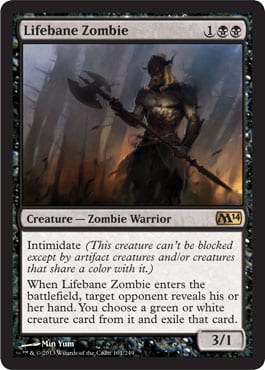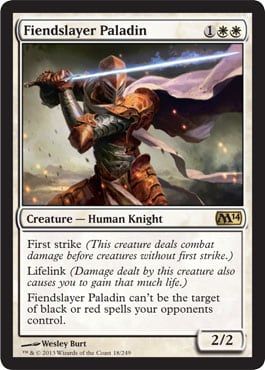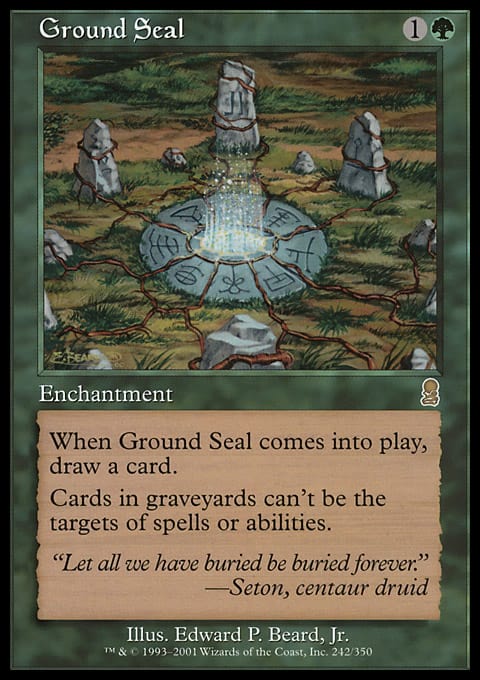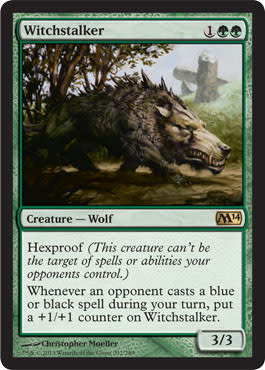One of the most undervalued aspects of competitive Magic is sideboarding. Too often, players agonize over each card choice for their main decks, losing sleep over that sixtieth card, but give little thought to the contents of their sideboards until moments before a tournament. For the record, I’ve been that guy, though I’m not proud of it. Yet, in a time of events frequently featuring a very small number of different archetypes, often played by players with very small skill gaps, the smallest detail can be crucial.
The thing about your sideboard and how you use it is that it’s not merely a small detail; it’s a major factor in determining tournament success. Somewhere between 50% and 66% of your games are played after sideboarding. In those games, you have the ability to change the contents of your deck by up to 25%. If determining what your sixtieth card in your main deck should be is a big deal, determining what should be in your sideboard is of monumental importance.
Not surprisingly, there is typically a greater consensus among the Magic community about the main deck contents of any major deck type than on the contents of the sideboard. For example, the week of July 15, there were five Jund midrange decks that went 4–0 on Magic Online. Each of them featured exactly:
- 4 Huntmaster of the Fells
- 3 Olivia Voldaren
- 4 Thragtusk
- 2 Garruk, Primal Hunter
- 4 Farseek
- And exactly 25 lands
Four of them used Vampire Nighthawks, and all of those ran exactly two. Clearly, players are paying attention to the content of each other’s main decks and what seems to be working. Yet, their sideboards varied wildly. Twenty-three different cards can be found in those five sideboards. The only things all five sideboards had in common were that they each had at least one Duress and that they had at least one Tragic Slip. There were fourteen different cards that only showed up in exactly one of the five sideboards.
This leads to the big question: Why are the main decks so uniformly constructed but the sideboards so diverse? There are several likely explanations:
- Players are prioritizing the acquisition of cards for the main decks and the building of the main decks and just throwing together the sideboards as afterthoughts.
- Players believe the main decks are good for a generic metagame, and they keep changing the sideboards in preparation for what they believe are likely to be the popular decks for a given tournament.
- Players are willing to take more creative risks with sideboards than with main decks because they are afraid of being ridiculed for going rogue with the build of their main deck but not the sideboard.
- The articles and other places they’re finding their decklists don’t really cover sideboards.
- It’s easier to test a main deck and come to a consensus for the build of a main deck than it is to do so for a sideboard.
It’s most likely is a combination of factors, and the problem just snowballs—when people look at decklists that did well at tournaments, there isn’t a consensus to work from for future events. This suggests that while players can rely heavily on the Internet as a source for good main-deck builds to choose from when going to a tournament, they may be largely on their own when figuring out what the best builds for their sideboards are. So, while players are constantly being bombarded with the principles and thought processes needed for building a good deck, they might be better off focusing on what the principles of building a good sideboard are.
Yet, that alone isn’t enough. In order for your excellently-built sideboard to matter, you need to know how to make use of it effectively. All too often, players experiment with one sideboarding plan in Game 2 and try something completely different in Game 3 because they have no idea what they should be doing. Even worse is when you face an opponent against whom you’re having such a hard time deciding what approach to use that you just give up and don’t sideboard at all, usually leaving yourself at a major disadvantage.
Ideally, building a good sideboard and figuring out how best to use it go hand in hand. A key part of determining what to put in your sideboard should be your sideboard plan. First, you need information:
- What decks are popular? What decks do you expect to run into at that particular event?
- What decks are difficult matchups for yours?
- What decks are easy matchups for yours?
- What cards in your deck are weak in each matchup?
Once you determine the answers to these questions, you’re ready to start deciding what the contents of your sideboard should be.
Silver Bullets
In most cases, you should be on a silver-bullet plan. You’re looking for three or four cards you can bring in for the three or four weakest cards in every given matchup that will dramatically improve your chances of winning that matchup. If it’s among your tougher matchups, go ahead and have cards in your sideboard exclusively for that matchup, especially if you expect that matchup to be a major presence at the tournament.
In most cases, however, one of the qualities you should be looking for in a sideboard card is versatility. A good sideboard card is useful in several matchups. If there is only one minor deck in the metagame that uses artifacts, a card like Shatter is too narrow and would be taking up valuable space in your board that could be better used. A card like Abrupt Decay, however, might help against the artifacts you’re worried about but still be good in other matchups because of its ability to deal with creatures.
On the one hand, you’re looking for cards that you would bring in a large number of matchups; on the other hand, if you find yourself bringing it in every game, perhaps you should be finding a spot for it in your maindeck.
The silver-bullet method is usually best in a wide-open metagame where your deck is pretty good against everything and you just want to be able to tweak it slightly for each matchup. There are times when the silver-bullet approach isn’t the right way to build your sideboard, however.
Transformation
A powerful sideboarding technique is the transformational sideboard. The main reason to have a transformational sideboard is that you have a very powerful main deck that’s easy to sideboard against. This happens frequently with combo decks. Perhaps you have a powerful deck that uses the graveyard for a combo kill. If opposing decks have sideboards full of graveyard hate, a transformational sideboard can be a powerful option. Ideally, your powerful combo will carry you to a Game 1 win, and as the opponent brings in four to eight anti-graveyard cards, you transform your deck from a graveyard combo deck into an aggro deck or a control deck. Not only will the opponent be bringing in four to eight dead cards, but perhaps he or she has sideboarded out some creature removal or some other cards that would have helped him or her deal with your new strategy.
If, for some reason, there is a Game 3, you have the advantage. How should the opponent sideboard? If he or she takes out the graveyard hate and you switch back or even go with a hybrid approach, he or she might just be clobbered. If he or she doesn’t take out the graveyard hate, he or she might end up with the same problem from Game 2. Yet, your choices are much safer, as even if the opponent ends up correctly guessing your Game 3 approach, you at least won’t have any dead cards, and you could easily win before the opponent draws any of his or her sideboard cards.
Targeted
Sometimes, the metagame will be such that it’s correct to build your sideboard to target a specific deck. Perhaps you have an incredibly powerful deck that everyone would be playing, except that it just rolls over against one deck type that happens to be somewhat popular, so most people aren’t playing your deck. In a case like that, it will often be correct to build your sideboard specifically to beat your problem matchup. If you’re confident of winning Game 1 in all other likely matchups and having a shot in Games 2 and 3 even without sideboarding, focus your sideboard on the deck you’re scared of. If you can change your deck by fifteen cards, you can usually transform a bad matchup into a good one. This is especially true since the opponent is probably taking the matchup for granted and won’t have a good sideboard for you. If you can make it so that some of the cards you’re bringing in for that matchup will be useful in other matchups, too, so much the better.
The other time when it makes sense to have a targeted sideboard is when there is a single deck type that’s dominating the metagame. Often in those cases, if you can build your sideboard to crush that matchup, you can roll through the field.
The most important thing to keep in mind is the importance of your sideboard. Building and using your sideboard well can easily be the difference between an early exit from an event or riding to the finals. While you may be one of many people of your skill level playing a particular deck type in an event, your sideboard is your edge and can be what sets you apart from the rest.
















